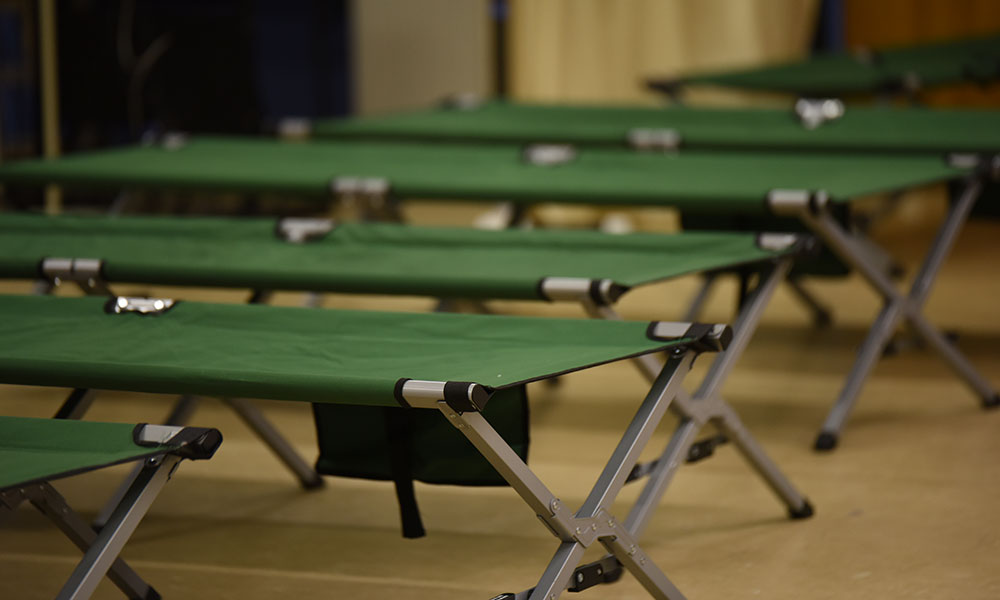“Everybody thinks that everyone who’s homeless is either a drunk or addicted to a substance or mentally ill,” says Mike Finocchi, Executive Director for Shelters of Saratoga (SOS). “You know what the number one cause of homelessness is? Domestic violence. You’d be surprised how many men I get in the shelter who are victims of domestic violence. It happens.”
Nonetheless, when SOS revealed plans to construct a low-demand Code Blue shelter on 14 Walworth Street, the property where the nonprofit is currently located, they were met with a months-long dispute from a group of 14 Saratoga residents, many of whom were concerned about the kind of people that a low-demand shelter would attract. “Low-demand” refers to whether tenants of the shelter have to be sober to receive aid. The two shelters currently on SOS property, which house 35 people, are not low-demand; they’re “case manage” shelters where residents must remain drug and alcohol free to benefit from SOS services. The Code Blue shelter, whose plans were officially approved by the Zoning Board of Appeals in early January, will not hold its tenants to the same standard of sobriety. “We just don’t want people to freeze to death out on the streets,” says Finocchi. “People just need to be able to walk in and sign in on their own accord. If they can’t, we’ll sit them down and call an ambulance.”

SOS has been running its Code Blue program since 2013, when a homeless woman named Nancy Pitts froze to death sleeping in the loading dock behind the Saratoga Senior Center on a frigid December night. After news of Pitts’ death shocked and horrified the city, Code Blue began providing shelter and food to homeless people when temperatures dipped dangerously low. “It’s not just three hots and a cot,” Finocchi says of Code Blue. (That is, hot meals.) “The majority of people do want services. Last year alone we served 88 individuals. We successfully transitioned 37 people from the streets to SOS, to senior housing, to rehab, to homes of family members, some got their own apartments. I have six people at Code Blue now that get up every morning to go work eight hours and come back every night, five days a week.”
Over the last couple years, providing these services has become significantly more complicated. In the initial years, Code Blue operated out of several different locations including churches, the Salvation Army and the Saratoga Music Hall. In 2016, Governor Cuomo passed Executive Order 151, which decreed that homeless shelters extend their hours of operations so that homeless people could remain indoors when the weather dipped below 32 degrees. In other words, Code Blue needed to be open 24/7 in the winter, a requirement that forced the operation out of the Salvation Army. “There were times that low temperatures could stretch over two and a half weeks, where we were running continuously for 24 hours,” says Finocchi. “Because of this mandate and the amount of time we have to be open, I hired 10 additional staff. We’ve been open probably almost every night since November 7.”
Luckily, the Soul Saving Station Church was able to make room for Code Blue. And by another stroke of luck, around Christmastime 2016, the Mitzen family, who founded local marketing firm Fingerpaint, decided to cover the costs of building a Code Blue facility on SOS property. Up until the decision of the Zoning Board of Appeals, neighborhood pushback was able to stall construction. Now, Finocchi is happy to say that SOS can finally build the shelter, which will house up to 50 people. “Men and women are going to have their own floors. There’s going to be showers, laundry, a dining hall. Most importantly, we’ll be able to share services. My case managers at SOS will be able to assist Code Blue.”
Finocchi says that he often loses track of the homeless people who he sends from Code Blue to SOS; once they leave a facility, they don’t always show up again. With all the services on the same property, fewer people will slip through the cracks. “We’ll be able to share services, which will enable us to assist many more people.”
Hopefully, that also means Saratoga will never have another Nancy Pitts on its conscience again.


